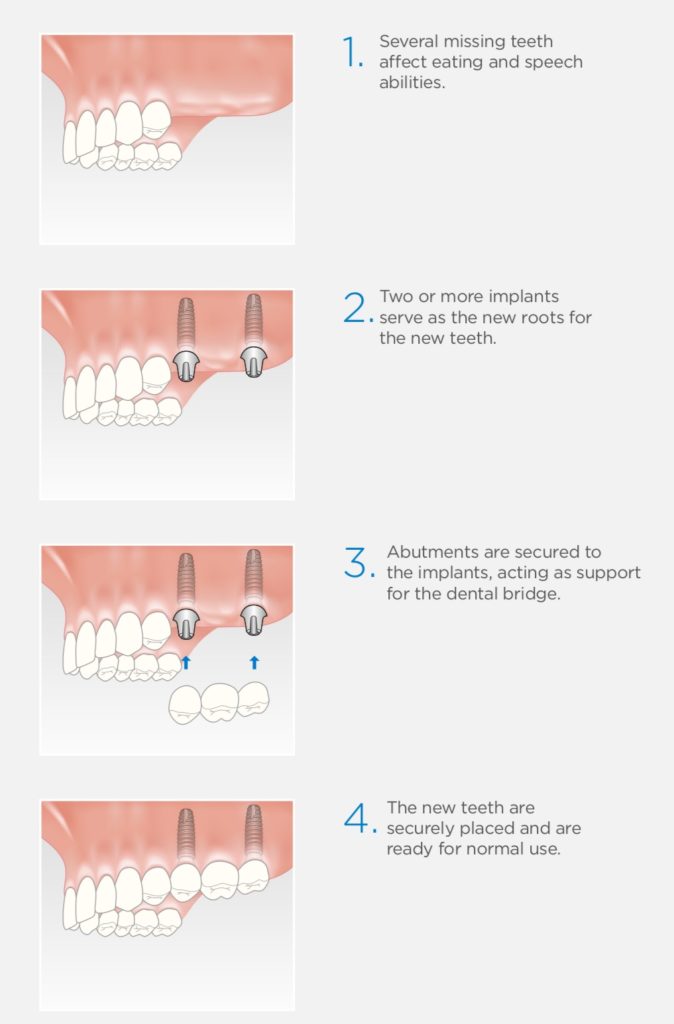Dental Implants – Multiple
Dentsply Sirona Implants — implants for life
Do you suffer from the physical discomfort associated
with missing teeth?
Do you have difficulties eating or speaking clearly due to
the loss of these teeth? If so, implant-supported bridges
may be the solution for you.
Historically, partial tooth-supported bridges or clasp-retained removable dentures have been the treatment
solution for multiple tooth loss. An implant-supported
bridge eliminates the need for harmful clasps as well as
the grinding of healthy adjacent teeth for supporting a
bridge. Dental implants act as replacement tooth roots,
providing a stable foundation for replacement teeth that
function just like natural teeth so you can eat, speak and
smile with confidence!
Treatment procedure
1 – A thorough examination
The first step of dental implant therapy is a discussion with your dentist, followed by a thorough
dental examination. The jaw is X-rayed to check
the condition of the bone tissue and to determine
the placement of the dental implants. An impression is made of the jaw and existing teeth, forming
an important platform for the treatment planning.
2 – Inserting the dental implants
There are two options for dental implant placement,
depending on your clinical situation. In a one-step
procedure, the dental implants are placed and then
temporary abutments are attached. In a two-step
procedure, the dental implants are inserted and
then covered by the gum, and left to heal for a maximum healing period of three
months for the lower jaw, and six months for the
upper jaw. The abutments are attached at a later date.
3 – Attaching the abutments
In a one-step treatment, the temporary abutments
are replaced by permanent ones after the dental implants have bonded with the bone tissue. The second part of a two-step procedure involves making
a minor incision to open the gum and put the abutments in place. When the abutments are in place, a new impression is made.
4 – Fitting and re-examination
When the bridge is ready, your dentist simply
attaches it to the dental implants. This is usually
followed by a few follow-up visits to check
functionality and esthetics. That’s all there is
to it, and it is virtually impossible to see the
difference between the existing teeth and the
new teeth.

